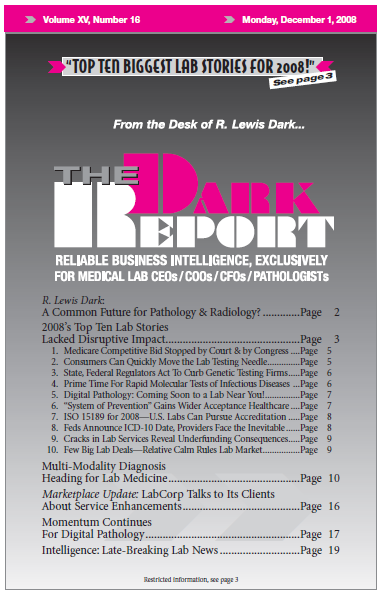CEO Summary: At the upcoming Molecular Summit in Philadelphia on February 10-11, 2009, pathologists, molecular imaging experts, and informaticians will share the latest developments on the integration of in vivo (imaging) and in vitro (pathology) diagnostics. A major theme will be discussion about multi-modality diagnostics and how this new discipline—driven by advances in genetics and […]
To access this post, you must purchase The Dark Report.


